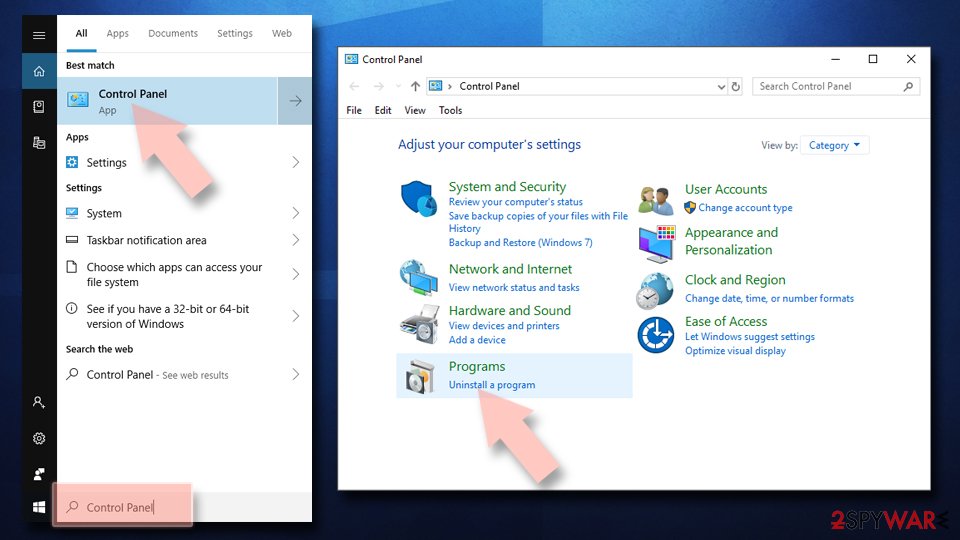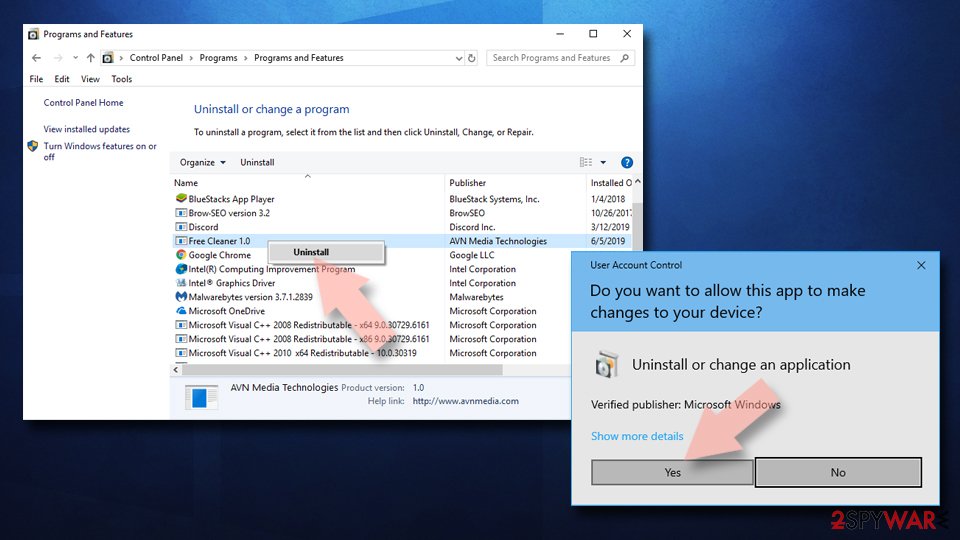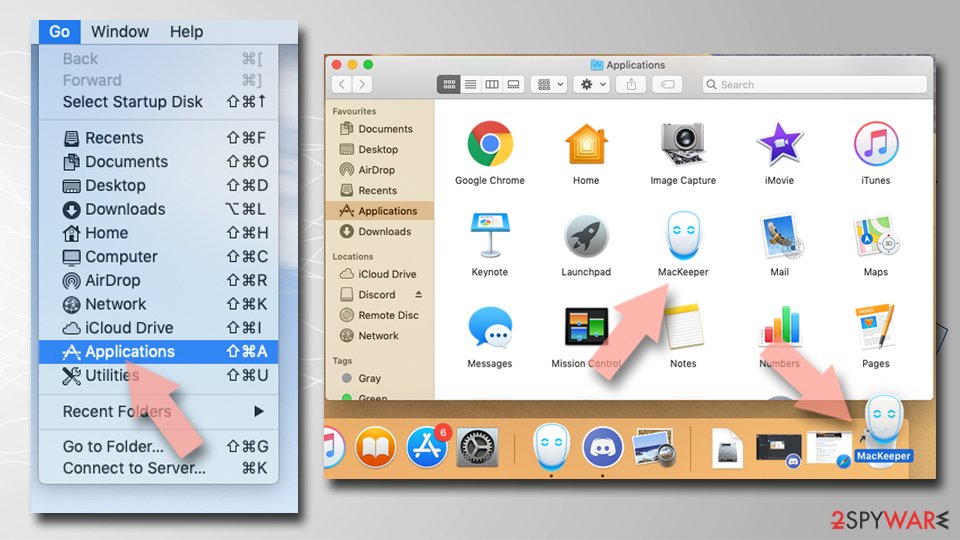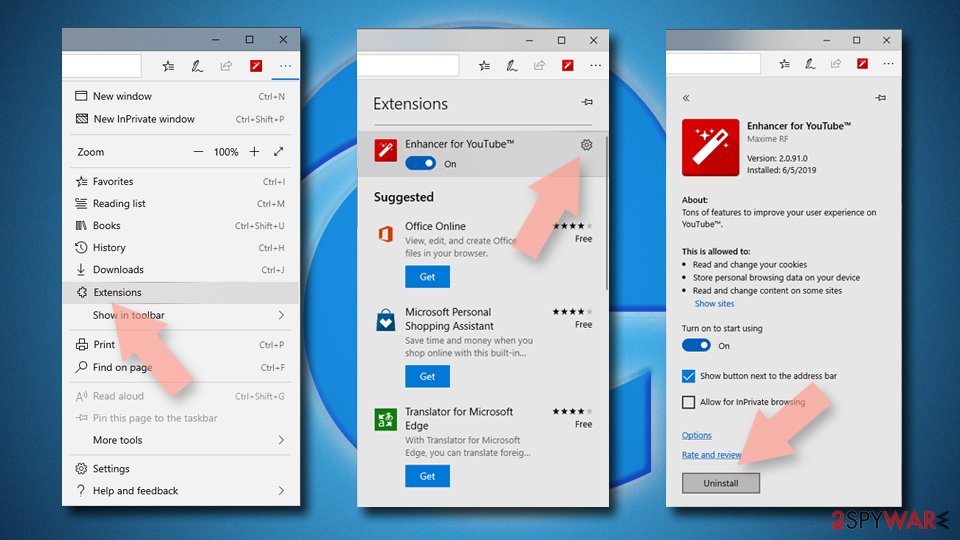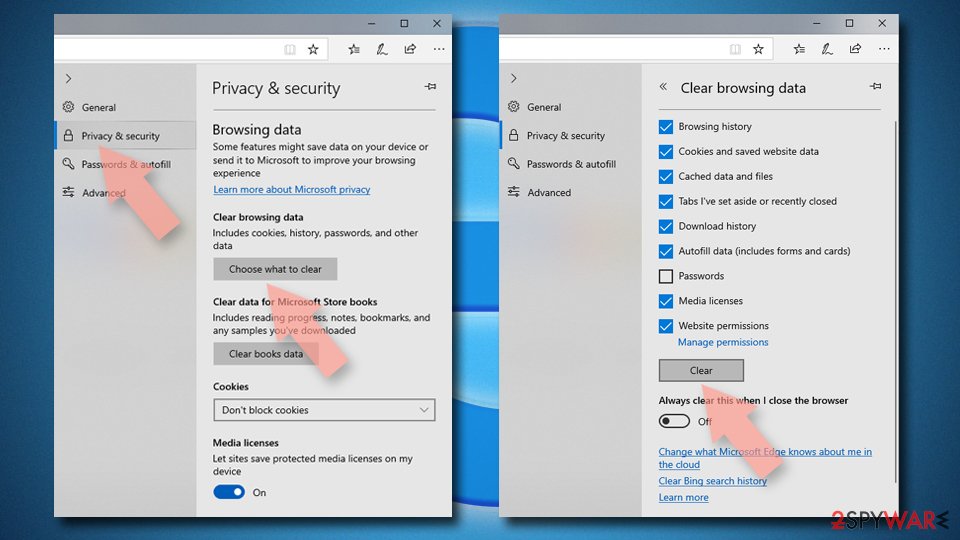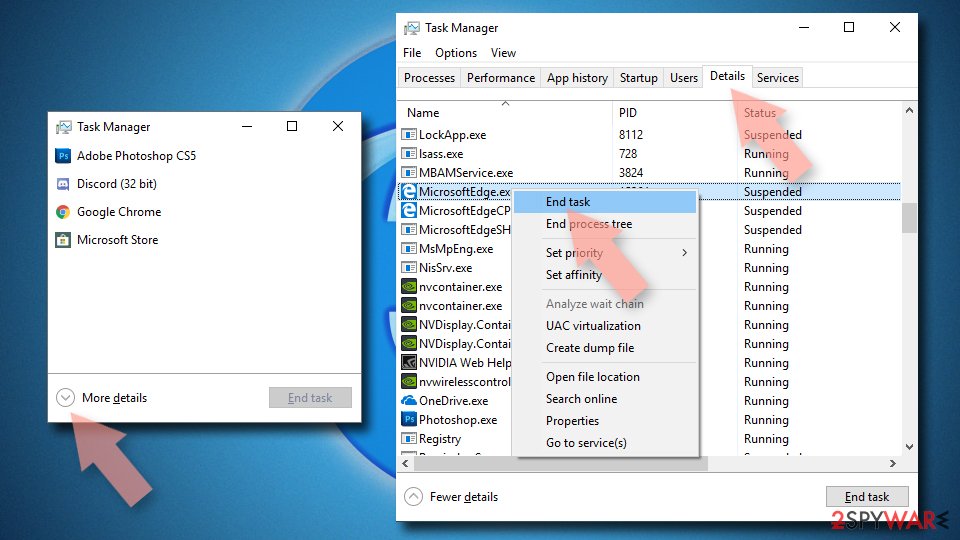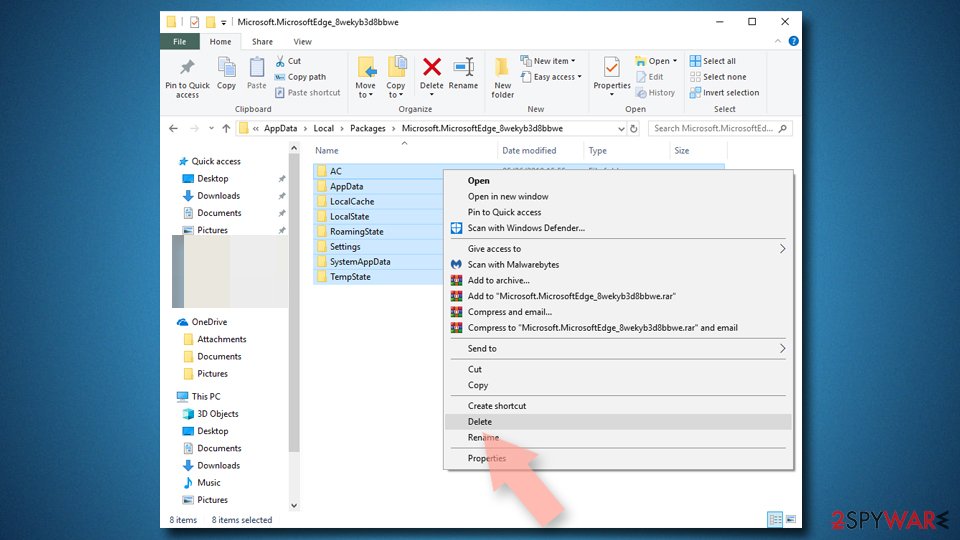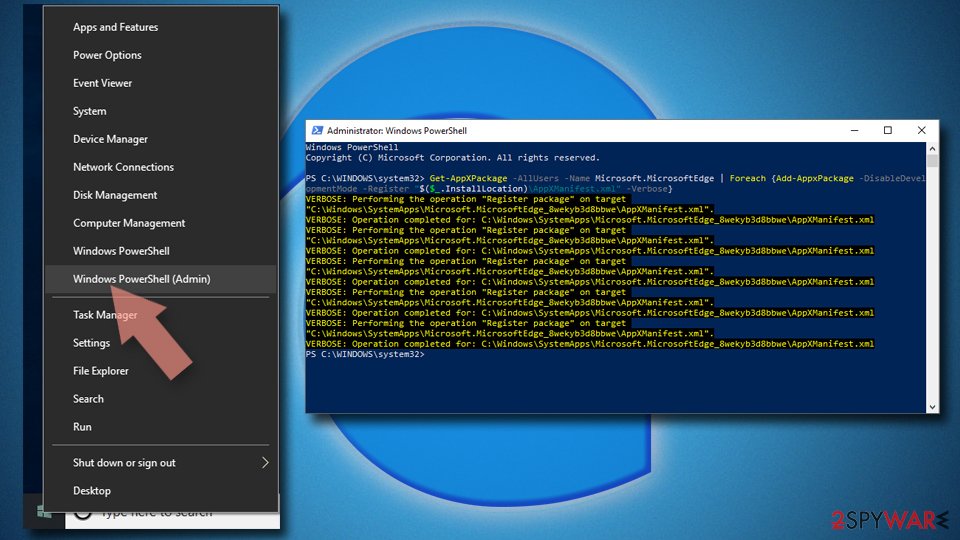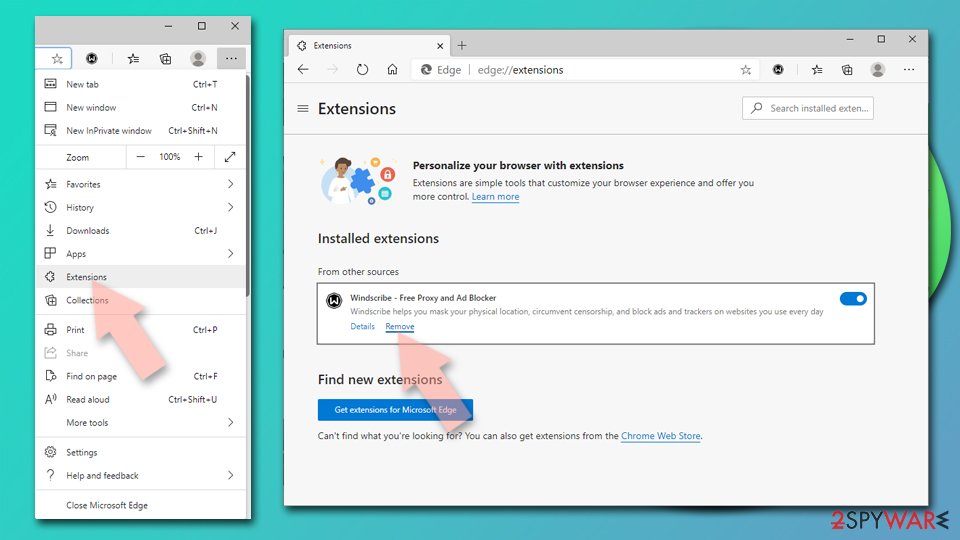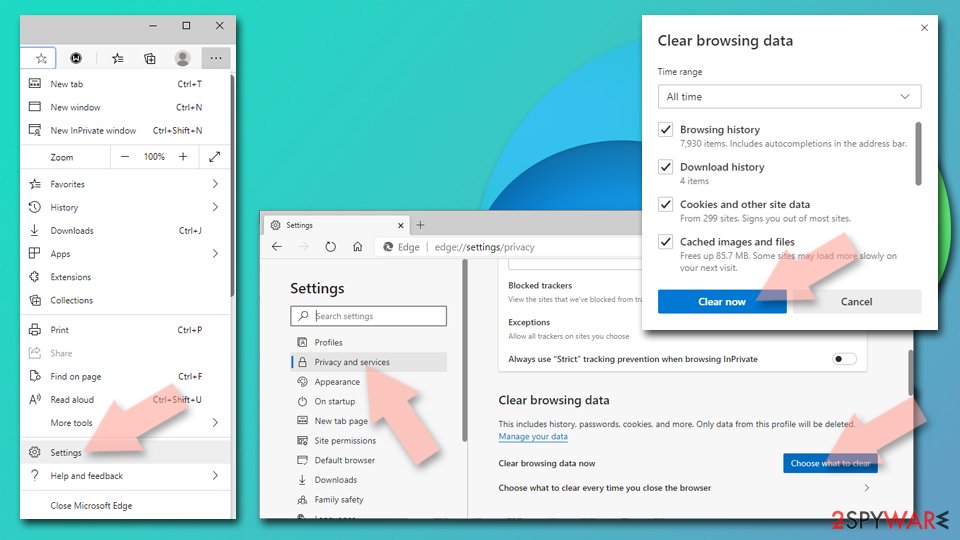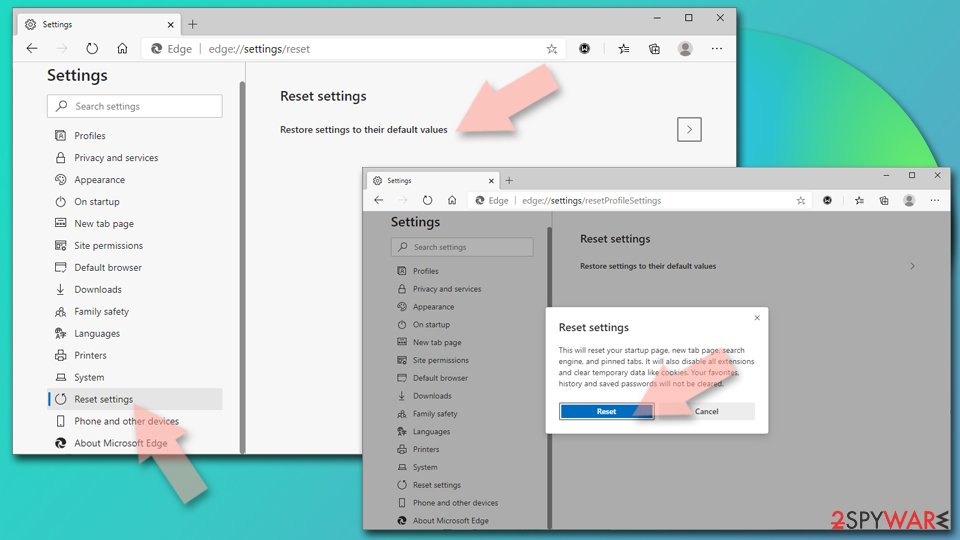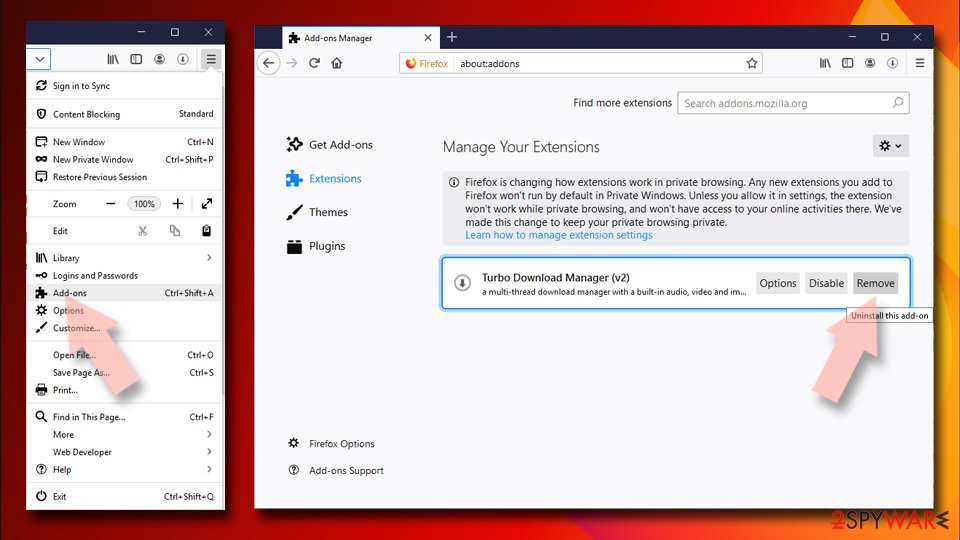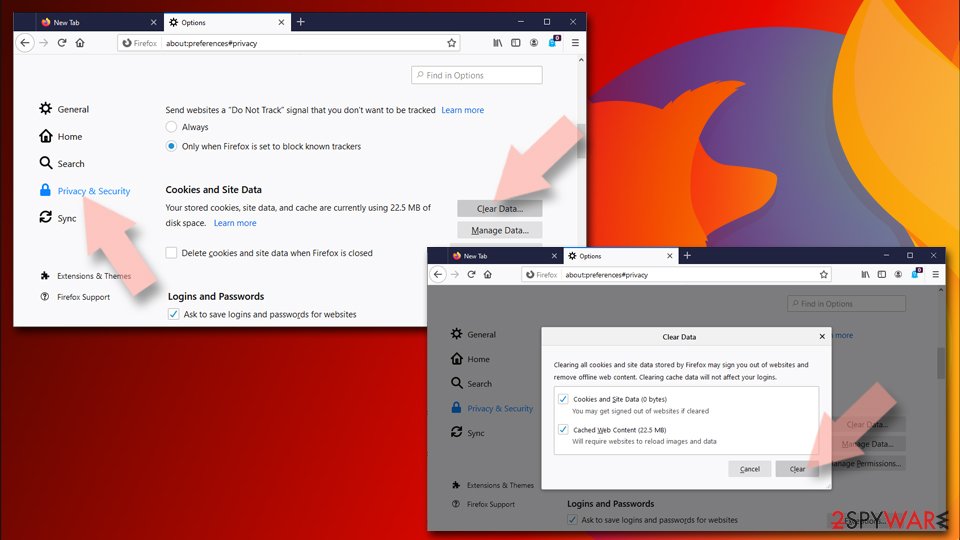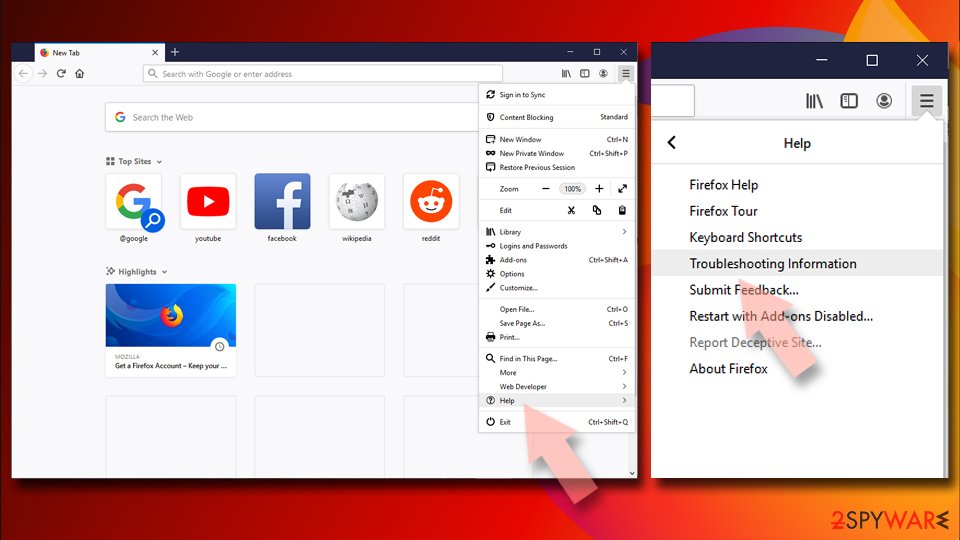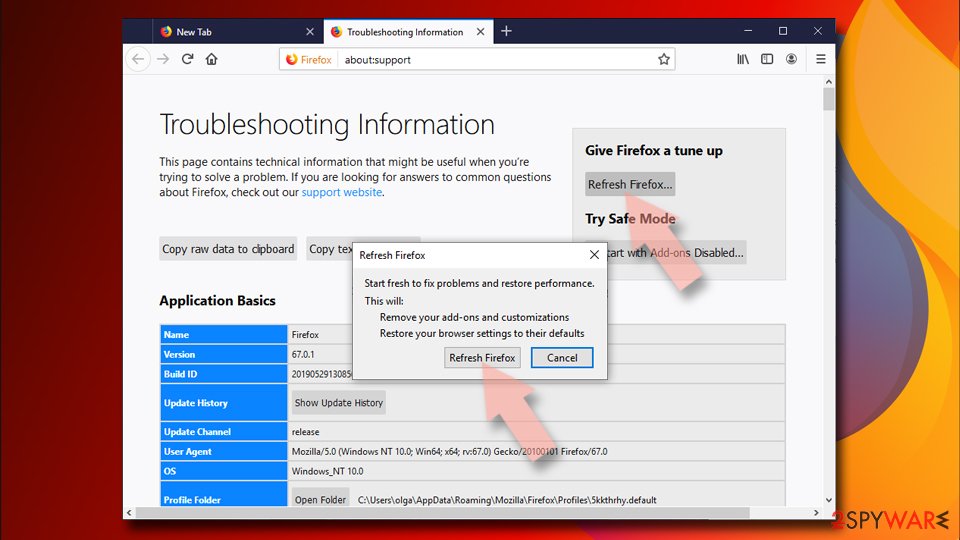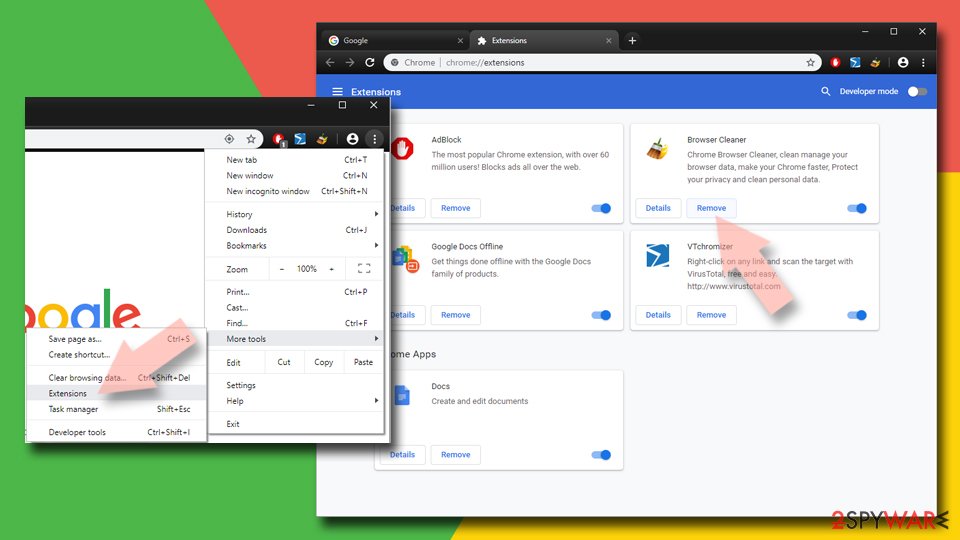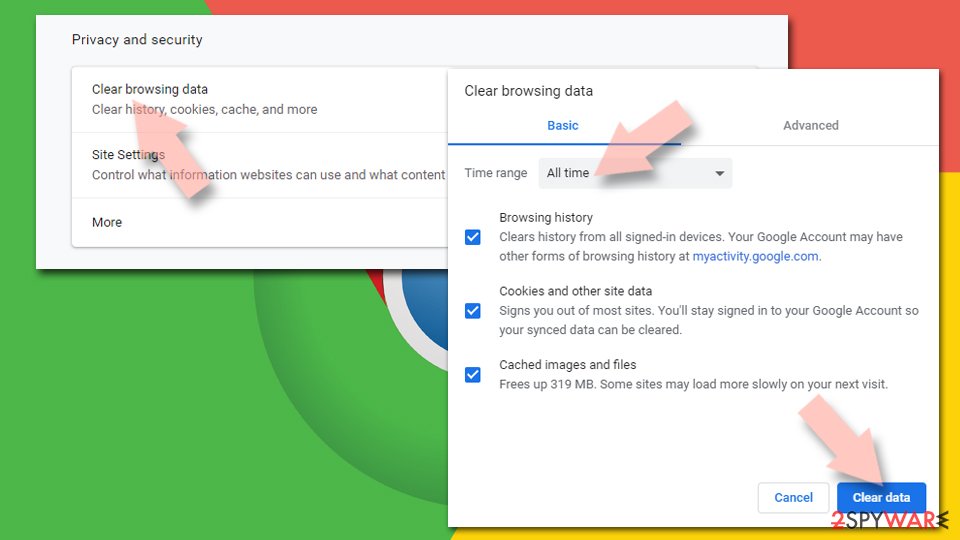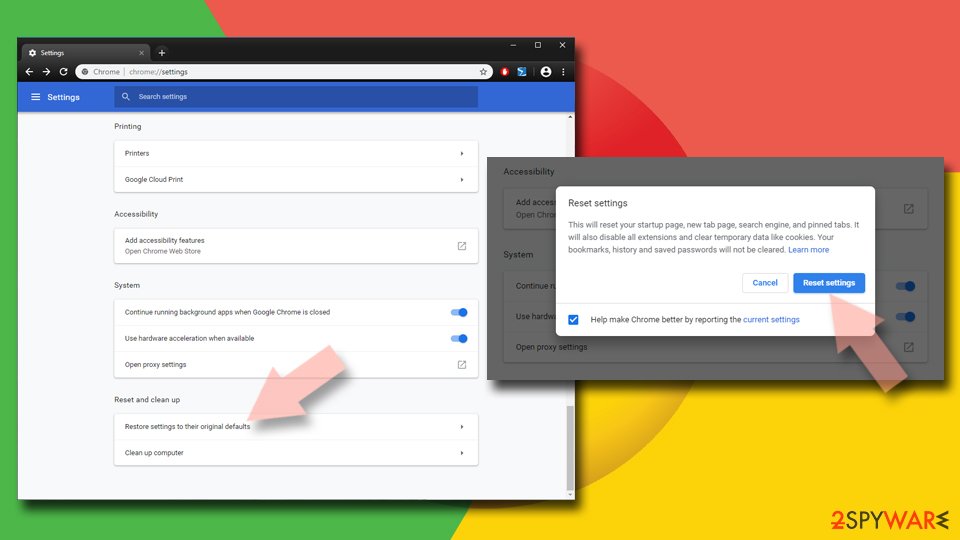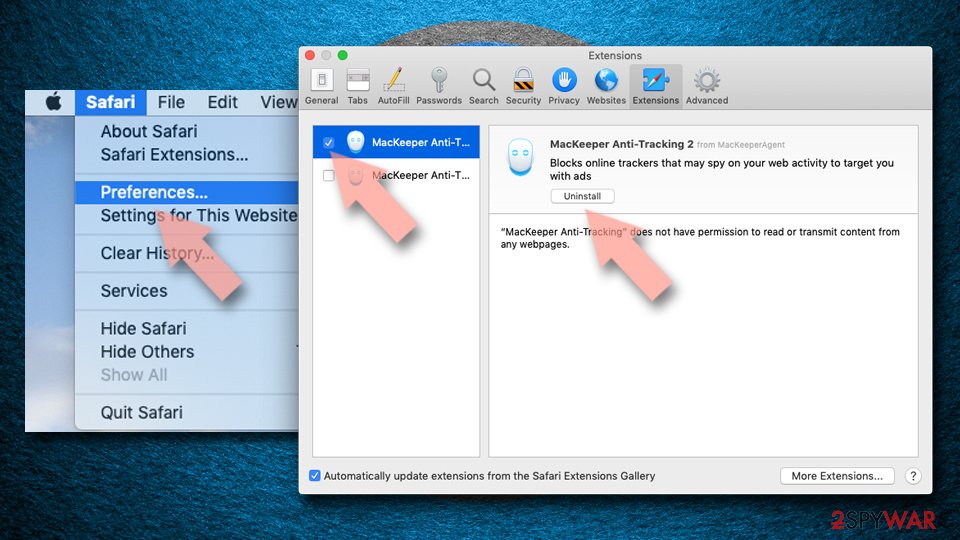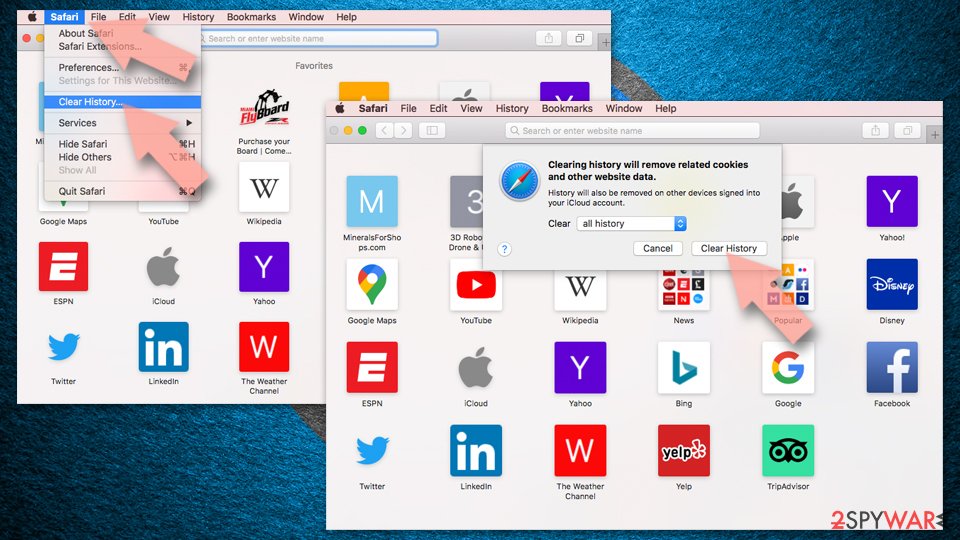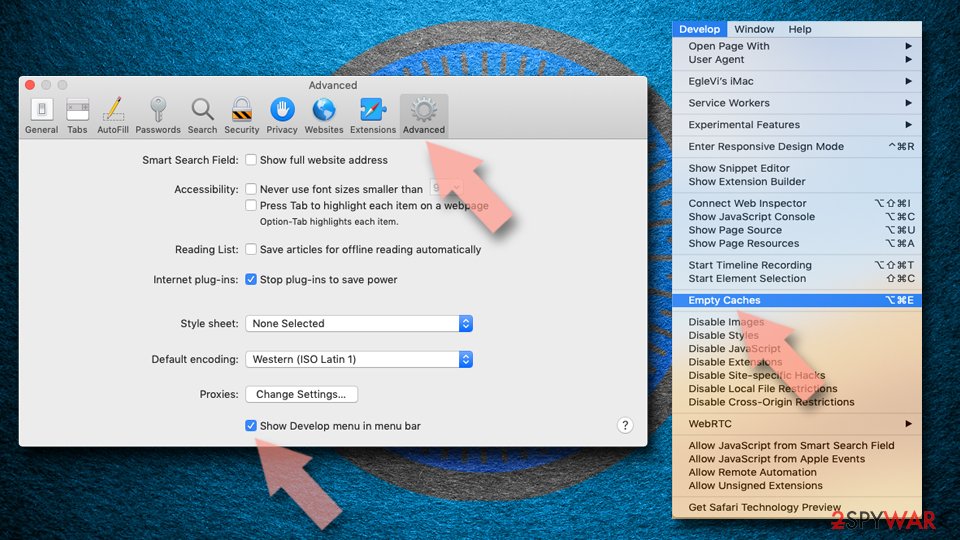Safefinderds.com (Removal Guide) - Free Instructions
Safefinderds.com Removal Guide
What is Safefinderds.com?
Safefinderds.com is a deceptive search engine that delivers altered search results

Safefinderds.com is a potentially unwanted program that, after infiltration, makes unsolicited changes to Google Chrome, Mozilla Firefox, Internet Explorer or Safari browser. It changes browser's homepage, new tab URL and search engine to Search.safefinderds.com. Apart from these changes, the dubious app also spies on users’ browsing habits, displays invasive ads and redirects to unknown domains.
| SUMMARY | |
| Name | Safefinderds.com |
|---|---|
| Type | Browser hijacker |
| Symptoms | Altered browser settings, invasive advertisement, bogus search results, etc. |
| Official site | hxxp://www.safefinderds.com/ |
| Distribution | Software bundling, official website |
| Main dangers | Malware infiltration, leaked data, etc. |
| Elimination | By installing security software (FortectIntego) or by checking instructions below this article |
The extension that is offered by this browser hijacker is called Safe Finder DS and can be downloaded from official website. However, Safefinderds.com hijack typically occurs via software bundling – a misleading marketing campaign that is used by freeware and PUP developers.
After infiltration, Safe Finder DS redirects all search results to Yahoo. It is a legitimate search engine which typically provides accurate search results. However, because the search is conducted via a browser hijacker, it displays alternative search results, promoting affiliated content. This feature makes the PUP not only useless but adds an unnecessary advertisement to each of the search queries.
In case users would like to go back to their previous search engine, they will soon notice that it is impossible to accomplish without Safefinderds.com removal. The unwanted app will simply reapply its settings after each attempt to alter them. Additionally, it might prevent navigation to certain websites, such as security software sites.
Safefinderds.com might display ads that lead to legitimate retailers. However, in most cases, users can be guided to less-known websites. This way, developers of the app benefit while generating pay-per-click revenue, giving users nothing in return. Furthermore, websites displayed by this browser hijacker might be of dangerous content, such as bogus software promotion, phishing,[1] fake update or even hacked or malware-ridden sites.
Developers are not too concerned about that though, because they state that they are not liable for any content that could potentially damage users’ machine:
The Company does not control any Third Party Content, and you agree the Company is not responsible for the availability, accuracy, or substance of any Third Party Content. You understand that by installing or using the Extension you may be exposed to Third Party Content that you may find objectionable, offensive, or indecent and that, in this respect, you use the Extension at your own risk.
Additionally, PUP developers employ various technologies (such as tracking cookies, beacons, JavaScript, web and DOM[2] storage data, etc.) to collect specific data about users and share it with third-parties to generate the targeted advertisement.
All that said, we suggest you remove Safefinderds.com and avoid unwanted redirects and fake search results. You can use FortectIntego for that, or check our instructions below this article.

Distribution methods of unwanted applications
Research shows[3] that users are typically unaware that picking Recommended/Quick settings during free software installation might result in PUP installation. They do not doubt developers, as they advise users to pick this options (“to save time,” and similar excuses).
By using Quick mode, users do not notice that they accepted terms and conditions of the application. This technique is often used by the unwanted apps and freeware developers only to deliver their useless products to as many computers as possible.
Therefore, do not fall for this trick. Additional components in a software bundle will probably never be useful for you. Instead, pick Advanced/Custom mode and de-select all the questionable apps, such as media players, toolbars, browser extensions, system optimizers, PDF creators and similar. If you think that some of these programs might be useful for you, do some research online – it can quickly change your mind.
Uninstall Safefinderds.com and go back to normal web browsing
Because Safefinderds.com virus enters machines without users’ consent, it might install additional components without giving much notice as well. The problem is that it then becomes hard to distinguish which programs in your Control Panel are legitimate (these PUPs might hide under such names as NativeDesktopMediaService).
Therefore, we recommend using security software for Safefinderds.com removal. It will find all the additional items that the PUP installed and eliminate them in just a few steps – merely follow on-screen instructions.
Alternatively, you can also remove Safe Finder DS manually. You can check our illustrated guide for that. Make sure you do not rush the process as it may result in the unwanted app’s return.
You may remove virus damage with a help of FortectIntego. SpyHunter 5Combo Cleaner and Malwarebytes are recommended to detect potentially unwanted programs and viruses with all their files and registry entries that are related to them.
Getting rid of Safefinderds.com. Follow these steps
Uninstall from Windows
Instructions for Windows 10/8 machines:
- Enter Control Panel into Windows search box and hit Enter or click on the search result.
- Under Programs, select Uninstall a program.

- From the list, find the entry of the suspicious program.
- Right-click on the application and select Uninstall.
- If User Account Control shows up, click Yes.
- Wait till uninstallation process is complete and click OK.

If you are Windows 7/XP user, proceed with the following instructions:
- Click on Windows Start > Control Panel located on the right pane (if you are Windows XP user, click on Add/Remove Programs).
- In Control Panel, select Programs > Uninstall a program.

- Pick the unwanted application by clicking on it once.
- At the top, click Uninstall/Change.
- In the confirmation prompt, pick Yes.
- Click OK once the removal process is finished.
Delete from macOS
To uninstall Safefinderds.com from Mac, follow these instructions:
Remove items from Applications folder:
- From the menu bar, select Go > Applications.
- In the Applications folder, look for all related entries.
- Click on the app and drag it to Trash (or right-click and pick Move to Trash)

To fully remove an unwanted app, you need to access Application Support, LaunchAgents, and LaunchDaemons folders and delete relevant files:
- Select Go > Go to Folder.
- Enter /Library/Application Support and click Go or press Enter.
- In the Application Support folder, look for any dubious entries and then delete them.
- Now enter /Library/LaunchAgents and /Library/LaunchDaemons folders the same way and terminate all the related .plist files.

Remove from Microsoft Edge
Do not forget that settings of MS Edge have to be set to default after PUP elimination:
Delete unwanted extensions from MS Edge:
- Select Menu (three horizontal dots at the top-right of the browser window) and pick Extensions.
- From the list, pick the extension and click on the Gear icon.
- Click on Uninstall at the bottom.

Clear cookies and other browser data:
- Click on the Menu (three horizontal dots at the top-right of the browser window) and select Privacy & security.
- Under Clear browsing data, pick Choose what to clear.
- Select everything (apart from passwords, although you might want to include Media licenses as well, if applicable) and click on Clear.

Restore new tab and homepage settings:
- Click the menu icon and choose Settings.
- Then find On startup section.
- Click Disable if you found any suspicious domain.
Reset MS Edge if the above steps did not work:
- Press on Ctrl + Shift + Esc to open Task Manager.
- Click on More details arrow at the bottom of the window.
- Select Details tab.
- Now scroll down and locate every entry with Microsoft Edge name in it. Right-click on each of them and select End Task to stop MS Edge from running.

If this solution failed to help you, you need to use an advanced Edge reset method. Note that you need to backup your data before proceeding.
- Find the following folder on your computer: C:\\Users\\%username%\\AppData\\Local\\Packages\\Microsoft.MicrosoftEdge_8wekyb3d8bbwe.
- Press Ctrl + A on your keyboard to select all folders.
- Right-click on them and pick Delete

- Now right-click on the Start button and pick Windows PowerShell (Admin).
- When the new window opens, copy and paste the following command, and then press Enter:
Get-AppXPackage -AllUsers -Name Microsoft.MicrosoftEdge | Foreach {Add-AppxPackage -DisableDevelopmentMode -Register “$($_.InstallLocation)\\AppXManifest.xml” -Verbose

Instructions for Chromium-based Edge
Delete extensions from MS Edge (Chromium):
- Open Edge and click select Settings > Extensions.
- Delete unwanted extensions by clicking Remove.

Clear cache and site data:
- Click on Menu and go to Settings.
- Select Privacy, search and services.
- Under Clear browsing data, pick Choose what to clear.
- Under Time range, pick All time.
- Select Clear now.

Reset Chromium-based MS Edge:
- Click on Menu and select Settings.
- On the left side, pick Reset settings.
- Select Restore settings to their default values.
- Confirm with Reset.

Remove from Mozilla Firefox (FF)
Reset your Firefox browser:
Remove dangerous extensions:
- Open Mozilla Firefox browser and click on the Menu (three horizontal lines at the top-right of the window).
- Select Add-ons.
- In here, select unwanted plugin and click Remove.

Reset the homepage:
- Click three horizontal lines at the top right corner to open the menu.
- Choose Options.
- Under Home options, enter your preferred site that will open every time you newly open the Mozilla Firefox.
Clear cookies and site data:
- Click Menu and pick Settings.
- Go to Privacy & Security section.
- Scroll down to locate Cookies and Site Data.
- Click on Clear Data…
- Select Cookies and Site Data, as well as Cached Web Content and press Clear.

Reset Mozilla Firefox
If clearing the browser as explained above did not help, reset Mozilla Firefox:
- Open Mozilla Firefox browser and click the Menu.
- Go to Help and then choose Troubleshooting Information.

- Under Give Firefox a tune up section, click on Refresh Firefox…
- Once the pop-up shows up, confirm the action by pressing on Refresh Firefox.

Remove from Google Chrome
Delete malicious extensions from Google Chrome:
- Open Google Chrome, click on the Menu (three vertical dots at the top-right corner) and select More tools > Extensions.
- In the newly opened window, you will see all the installed extensions. Uninstall all the suspicious plugins that might be related to the unwanted program by clicking Remove.

Clear cache and web data from Chrome:
- Click on Menu and pick Settings.
- Under Privacy and security, select Clear browsing data.
- Select Browsing history, Cookies and other site data, as well as Cached images and files.
- Click Clear data.

Change your homepage:
- Click menu and choose Settings.
- Look for a suspicious site in the On startup section.
- Click on Open a specific or set of pages and click on three dots to find the Remove option.
Reset Google Chrome:
If the previous methods did not help you, reset Google Chrome to eliminate all the unwanted components:
- Click on Menu and select Settings.
- In the Settings, scroll down and click Advanced.
- Scroll down and locate Reset and clean up section.
- Now click Restore settings to their original defaults.
- Confirm with Reset settings.

Delete from Safari
Remove unwanted extensions from Safari:
- Click Safari > Preferences…
- In the new window, pick Extensions.
- Select the unwanted extension and select Uninstall.

Clear cookies and other website data from Safari:
- Click Safari > Clear History…
- From the drop-down menu under Clear, pick all history.
- Confirm with Clear History.

Reset Safari if the above-mentioned steps did not help you:
- Click Safari > Preferences…
- Go to Advanced tab.
- Tick the Show Develop menu in menu bar.
- From the menu bar, click Develop, and then select Empty Caches.

After uninstalling this potentially unwanted program (PUP) and fixing each of your web browsers, we recommend you to scan your PC system with a reputable anti-spyware. This will help you to get rid of Safefinderds.com registry traces and will also identify related parasites or possible malware infections on your computer. For that you can use our top-rated malware remover: FortectIntego, SpyHunter 5Combo Cleaner or Malwarebytes.
How to prevent from getting stealing programs
Choose a proper web browser and improve your safety with a VPN tool
Online spying has got momentum in recent years and people are getting more and more interested in how to protect their privacy online. One of the basic means to add a layer of security – choose the most private and secure web browser. Although web browsers can't grant full privacy protection and security, some of them are much better at sandboxing, HTTPS upgrading, active content blocking, tracking blocking, phishing protection, and similar privacy-oriented features. However, if you want true anonymity, we suggest you employ a powerful Private Internet Access VPN – it can encrypt all the traffic that comes and goes out of your computer, preventing tracking completely.
Lost your files? Use data recovery software
While some files located on any computer are replaceable or useless, others can be extremely valuable. Family photos, work documents, school projects – these are types of files that we don't want to lose. Unfortunately, there are many ways how unexpected data loss can occur: power cuts, Blue Screen of Death errors, hardware failures, crypto-malware attack, or even accidental deletion.
To ensure that all the files remain intact, you should prepare regular data backups. You can choose cloud-based or physical copies you could restore from later in case of a disaster. If your backups were lost as well or you never bothered to prepare any, Data Recovery Pro can be your only hope to retrieve your invaluable files.
- ^ Josh Fruhlinger. What is phishing? How this cyber attack works and how to prevent it. CSO from IDG. Security decision-makers.
- ^ Web storage. Wikipedia. The Free Encyclopedia.
- ^ Avirus. Avirus. Hungarian cybersecurity news and articles.
